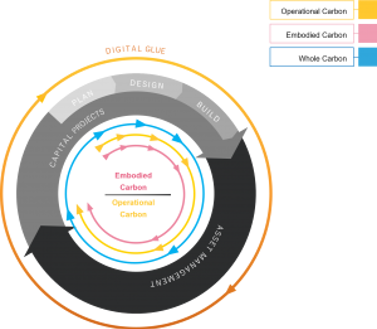What is simulation?
A simulation is an imitation of a real system or process. It is used to understand, predict, or analyze how a system behaves under different conditions.

Symetri's Head of Co-Innovation, Shivani Soni & Architectural Technology Consultant, Geoffrey A.Tears recently wrote an article for the Informed Infrastructure magazine which discusses this.

All previously thought to just be buzzwords, these terms are gaining more traction in the AECO (Architecture, Engineering, Construction and Operation) industry as it starts to update older buildings and build more-efficient ones.
In 2008, the UK passed “The Climate Change Act” establishing emission-reduction goals that now are law. The UK is the first nation to set a binding mitigation goal for climate change. In a 2019 report (10 years later), the Climate Change Committee suggested the UK could minimiSe its contribution to global warming by setting a target to have all greenhouse gas emissions reduced by the year 2050. The target is known as “net-zero” since it can be achieved by removing CO2 from the atmosphere to offset some sources of emissions by planting trees, building more efficiently and locally sourcing building materials. This, in turn, led to a “push and pull strategy,” encouraging industries and businesses to creatively find solutions already identified in their sector. It spearheaded the development of numerous frameworks and policies by many other countries and cities worldwide following its lead.
For example, in 2019 the city of New York introduced “Local Law 97,” setting the stage for U.S. adoption of sustainable/net-zero requirements. It became one of the first major U.S. cities to begin mandating greenhouse gas emissions tracking throughout the built environment. With certain exemptions, this law requires that existing and new buildings more than 25,000 square feet must meet and track specific sustainability and net-zero goals by 2030 with the objective to be completely net-zero by 2050. All these new regulations come with hefty consequences for noncompliance.
The graphic below shows the “digital glue” toward net-zero.

The process of meeting these requirements for new buildings and sites is much more streamlined and attainable. For existing owners, there hasn’t been a clear-cut path to follow for the green retrofitting of their buildings to meet these fast approaching goals. Ultimately, this puts them at risk for massive fines and other potentially worse scenarios. Many owners have no clue where to begin. Owners of existing buildings, who may feel overwhelmed by all the requirements for tracking and optimising their building’s sustainability and lifecycle carbon footprint, need assistance to guide them in the right direction.
A simulation is an imitation of a real system or process. It is used to understand, predict, or analyze how a system behaves under different conditions.
Learn what design means and how different types of design are used in the construction industry. Streamline your project with Symetri's digital solutions.
In this guide, we'll explain what a BOM is, how it works, and why it's a critical tool for product success. Whether you're a beginner or looking to optimize your BOM processes, this is your ultimate resource.
